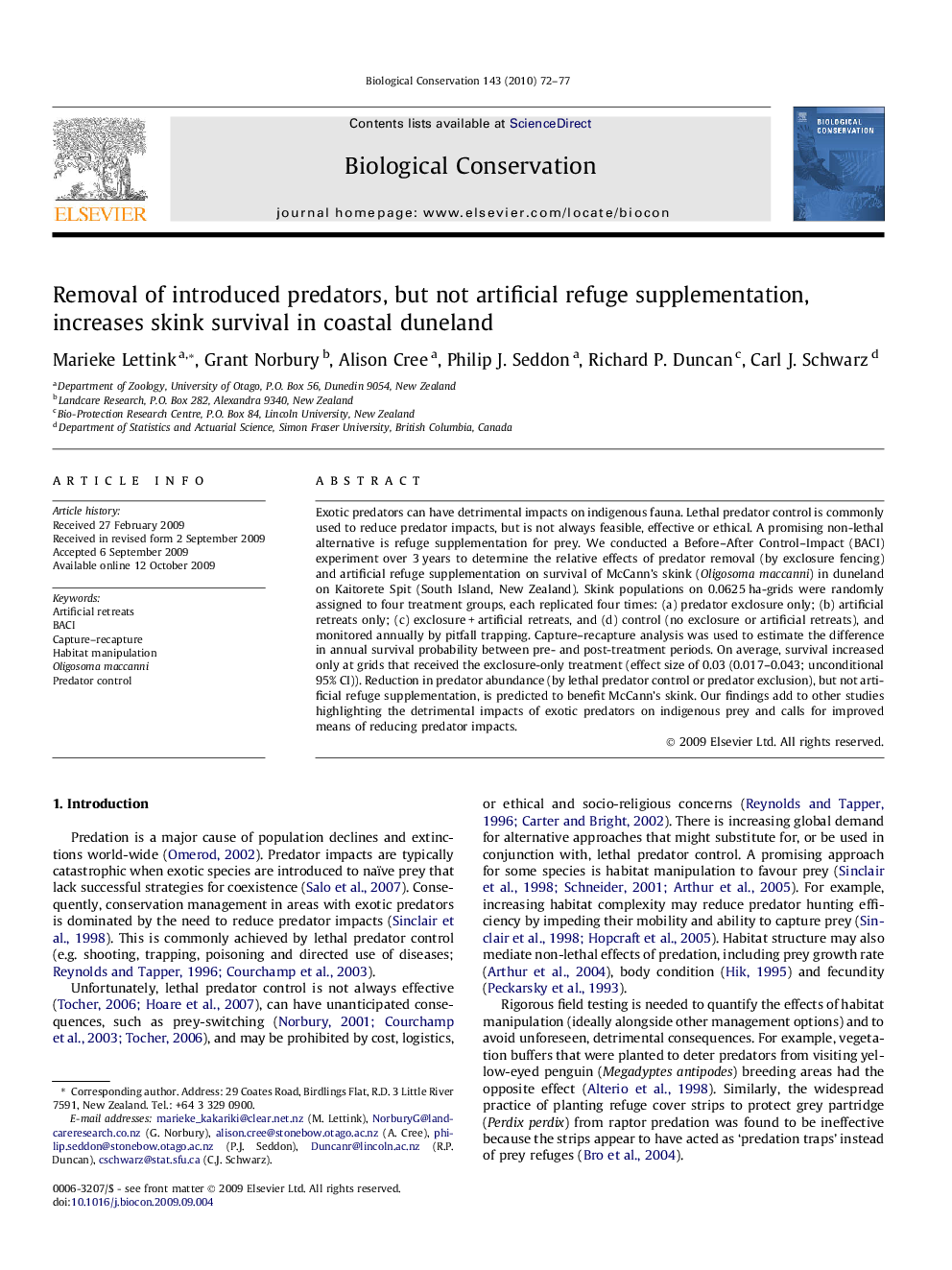| Article ID | Journal | Published Year | Pages | File Type |
|---|---|---|---|---|
| 4386055 | Biological Conservation | 2010 | 6 Pages |
Abstract
Exotic predators can have detrimental impacts on indigenous fauna. Lethal predator control is commonly used to reduce predator impacts, but is not always feasible, effective or ethical. A promising non-lethal alternative is refuge supplementation for prey. We conducted a Before-After Control-Impact (BACI) experiment over 3 years to determine the relative effects of predator removal (by exclosure fencing) and artificial refuge supplementation on survival of McCann's skink (Oligosoma maccanni) in duneland on Kaitorete Spit (South Island, New Zealand). Skink populations on 0.0625 ha-grids were randomly assigned to four treatment groups, each replicated four times: (a) predator exclosure only; (b) artificial retreats only; (c) exclosure + artificial retreats, and (d) control (no exclosure or artificial retreats), and monitored annually by pitfall trapping. Capture-recapture analysis was used to estimate the difference in annual survival probability between pre- and post-treatment periods. On average, survival increased only at grids that received the exclosure-only treatment (effect size of 0.03 (0.017-0.043; unconditional 95% CI)). Reduction in predator abundance (by lethal predator control or predator exclusion), but not artificial refuge supplementation, is predicted to benefit McCann's skink. Our findings add to other studies highlighting the detrimental impacts of exotic predators on indigenous prey and calls for improved means of reducing predator impacts.
Related Topics
Life Sciences
Agricultural and Biological Sciences
Ecology, Evolution, Behavior and Systematics
Authors
Marieke Lettink, Grant Norbury, Alison Cree, Philip J. Seddon, Richard P. Duncan, Carl J. Schwarz,
